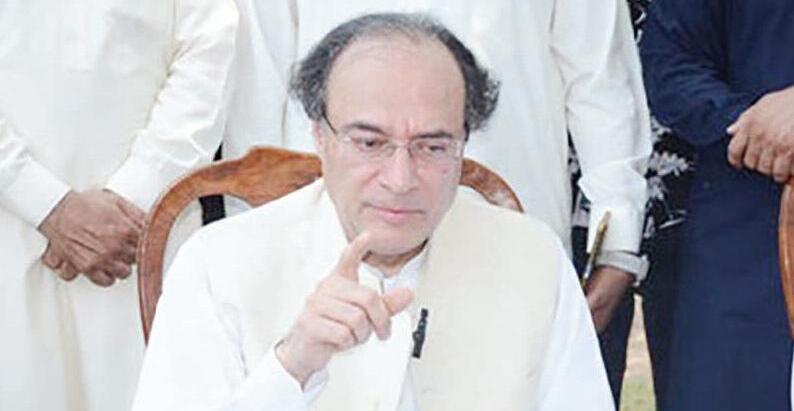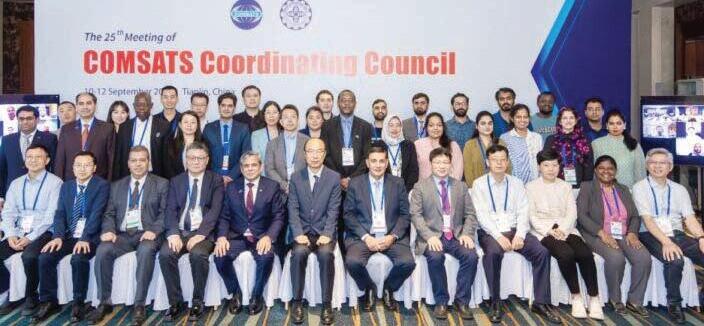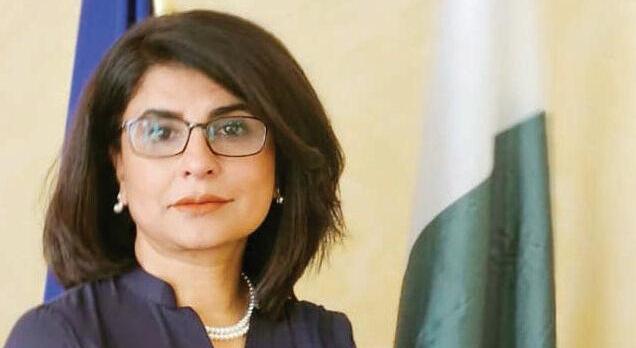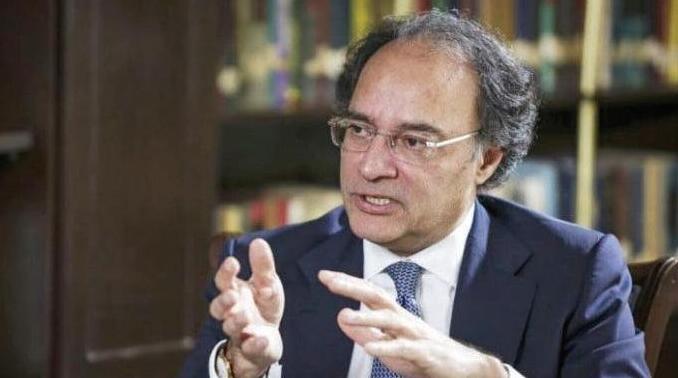Solar power not a monster
Tf Kamala Harris, the Democratic nominee for US president were to take a decisive stance demanding that Israel agree to an immediate ceasefire and unimpeded aid to Palestinians she would expand her vote lead over her Republican opponent, Donald Trump
This is one of the key findings of a recent poll commissioned by the Arab American Institute working with pollster John Zogby Between the Republican and Democratic conventions AAI surveyed 2 505 US voters to assess how the war in Gaza and U S policy toward Israel s conduct of the war would impact their votes in November What the poll found was that 15 percent of all voters say that the crisis in Gaza would be “very important” in determining their vote (another 33 percent saying it’s “somewhat important”) But on this issue like many others in today s USA there is a deep partisan divide with Republicans more supportive of Israel and Democrats favoring Palestinians Looking more closely at the data, we find that the partisan divide actually results from deep differences in the views of the demographic groups forming each party’s base with younger and non-white voters more sympathetic toward Palestinians and critical of Israel and older white and born-again Christians much more favourable toward Israel for example, most voters in all groups, except Republicans and born-again voters, disapprove of the way Israel is conducting the war, feel Israel has used too much force in Gaza, want an immediate ceasefire and oppose unrestricted financial and military support for Israel if it continues to operate in a manner that puts civilian lives at risk A plurality of all voters (43 percent) disapprove of how Israel is conducting the war, with only onethird approving Those disapproving include 54 percent of Democrats and 52 percent of young voters In addition 36 percent of all likely voters feel that Israel has used too much force including 46 percent of 18–34-year-olds
One area where there is near unanimity is with regard to the importance of an immediate ceasefire Three-quarters of all voters say this is important to them one-half say “very important” and another one-quarter say “somewhat important ” Only 11 percent say it’s “not important ” This super-majority includes Democrats Republicans and Independents and
Contributing
majorities of every demographic sub-group The most substantial majorities come, of course, from young and non-white voters Only very small percentages in all groups say an immediate ceasefire is not important Another area where there is strong support from most subsets of voters is in response to a question asking whether Israel should continue to receive unrestricted US aid or whether that aid should be conditioned on Israel s use of that aid in a way that harms civilians Only 28 percent feel Israel should always receive unrestricted aid while 51 pecent say there should be no unrestricted aid if Israel endangers civil-
h e
s e l f - g o v e r n a n c e D i l e m m a
Tconstitutional status of GilgitBaltistan has constantly been a subject of debate and discussion GilgitBaltistan is in a unique condition In spite of being managed by Pakistan it has actually not been totally incorporated right into Pakistan like the various other provinces This one-of-a-kind circumstance stimulates continuous conversations regarding its political standing In 1947, throughout the dividers of British India, Gilgit-Baltistan belonged to the royal state of Jammu and Kashmir At first, the Maharaja of Kashmir wished to remain independent; however in October 1947 he acceded to India This choice stimulated a dispute between India as well as Pakistan as both nations asserted ownership of the whole state of Jammu and Kashmir Throughout this turmoil, individuals of Gilgit-Baltistan, with the aid of neighbourhood militias rebelled against the Maharaja and also took control of the area Later on individuals of the Gilgit area declared Gilgit a component of Pakistan as well as raised the Pakistani flag On 16 November 1947, Sardar Alam Khan came to Gilgit as a political representative On 6 April 1948, the Gilgit Agency was put under the management of the political agent in the North-West frontier Province to look after the running of the Gilgit Agency and the states within the area Baltistan was likewise a component of the Gilgit Agency The tribal areas of Darrel and also Tangir acceded to Pakistan in 1951 The 1948 UN Security Council Resolution 47 was aimed at conducting a referendum to determine the fate of Jammu and Kashmir including Gilgit-Baltistan It was emphasized that the region was disputed and required international oversight Despite the fact that the referendum never took place, the resolution shows that the conflict remains unresolved and the international community is involved in addressing the dispute over Kashmir In 1947 the first law enacted was the continuation of the colonial law known as the fCR which granted all judicial and administrative power to the civil bureaucracy in the tribal areas and Gilgit-Baltistan On 28 April 1949, government officials of Pakistan, represented by the minister without portfolio, met with representatives of the AJK government without representation from Gilgit-Baltistan to sign the Karachi Agreement
ident in the northern regions with full administrative and judicial authority since 1952 In 1967 KANA transferred the powers of the High Court and the Revenue Commissioner to the Resident and appointed two political agents for Gilgit and Baltistan The Advisory Council for Northern Regions was established in 1970 in accordance with the constitutional decree of the Northern Regions Council, with 21 members chaired by a resident of the united territory The main administrative judicial and political reforms were introduced in 1975 in accordance with the Legal framework Order for the Northern Areas Council, which abolished the jagirdari system and extended civil and criminal law to the northern areas In 1994, the Council of Northern Districts was supplemented by the Rules for Conducting Business in Northern Districts which serve as the primary law with limited advisory functions The Supreme Court of Pakistan in its landmark ruling on 28 May 1999, declared that the people of the Northern Areas are citizens of Pakistan for all intents and purposes and instructed the government of Pakistan to ensure that they enjoy all fundamental rights The Northern Areas Council was renamed the Legislative Council of the Northern Areas in 1999 with expanded powers to legislate on 49 issues and the creation of the position of Speaker and three women s seats The 2009 Ordinance on the empowerment and Self-Governance of Gilgit-Baltistan renamed the Northern Areas Gilgit-Baltistan and established a governance structure similar to that of the provinces of Pakistan albeit without full provincial status This decree established the Legislative Assembly of Gilgit-Baltistan and the Gilgit-Baltistan Council, aiming to provide greater autonomy In 2015 the government of Pakistan established a committee headed by Sartaj Aziz the then advisor to the Prime Minister on foreign affairs to review the constitutional and administrative status of Gilgit-Baltistan The report by the Sartaj Aziz Committee presented a comprehensive set of recommendations aimed at improving the governance and constitutional status of Gilgit-Baltistan By offering temporary provincial status judicial reforms and an expansion of legislative powers
the committee aimed to more closely integrate Gilgit-Baltistan with Pakistan, respecting its unique and disputed status The implementation of these recommendations remains a crucial step towards addressing the region s long-standing demands for political and administrative autonomy The Supreme Court extended its jurisdiction to Gilgit-Baltistan, ruling that fundamental rights should be available to its residents By extending constitutional rights, advocating for legislative representation and emphasizing judicial independence the judgment sought to integrate Gilgit-Baltistan more closely with Pakistan while respecting its unique status However the implementation of these directives remains a complex and ongoing process, influenced by both domestic aspirations and international diplomatic considerations
Looking at the complex issue of the status of Gilgit-Baltistan it seems the unique status of the region was deliberately maintained by both India and Pakistan for decades, the two countries have been demanding plebiscites across Jammu and Kashmir, including Gilgit-Baltistan, through the United Nations each hoping for a favourable outcome However the people of Gilgit-Baltistan are not ready to accept the stagnation that deprives them of their rights They demand full provincial status to ensure its representation in the National Assembly and Senate and rights and opportunities like other provinces They want Gilgit-Baltistan to be formally recognized as the fifth province of Pakistan and the term temporary province should be included in the constitution to allow future changes if the UN resolution is implemented
Although the Government of Pakistan s efforts, such as the empowerment and Self-Government Ordinance 2009 and the recommendations of the Sartaj Aziz Committee represent efforts to strengthen self-government these initiatives are hampered by the region s contested status The complex balance between local aspirations for autonomy and the geopolitical realities surrounding Kashmir is still evolving In our opinion, a viable way forward would be to give the people of Gilgit-Baltistan proportional representation in the Parliament of Pakistan recognizing both their legitimate demands in the broader international context
The writers is a freelance columnist
Although the Government of PakistanÊs effor ts, such as the Empowerment and Self-Government Ordinance 2009 and the recommendations of the Sar taj Aziz Committee , represent effor ts to strengthen self-government, these initiatives are hampered by the regionÊs contested status The complex balance between local aspirations for autonomy and the g eopolitical realities surrounding Kashmir is still evolving T
The agreement stated that Pakistan would control the affairs of Gilgit The administration of the Gilgit Agency was transferred from the North-West frontier Province to the government of Pakistan and a separate Ministry of Kashmir Affairs was established In 1950 the Ministry of Kashmir Affairs and Northern Areas (KANA) took over the administration of the northern territories The joint secretary of the ministry has been performing the duties of a res-
Breaking the
ally transmitted infections
TH E history of women s healthcare reflects broader social, cultural, and scientific developments over time
ANCIENT AND TRADITIONAL PRACTICES
P R E H I S TO R I C A N D A N C I E N T
T I M E S: Early human societies likely had rudimentary knowledge of women’s health, passed down through generations Evidence from archaeological findings suggests that prehistoric women may have used herbal remedies and rituals to manage childbirth menstruation, and fertility Ancient civilizations like Egypt, Greece, China, and India had more formalized systems of medicine Ancient Greek medicine, influenced by Hippocrates, also addressed women’s health although often through a male-dominated perspective
TRADITIONAL AND INDIGENOUS
MEDICINE: Across various cultures, women s healthcare was managed by women within the community, such as midwives herbalists and healers These women used a combination of herbs rituals and spiritual practices to address health issues
In many indigenous cultures knowledge about women s health, including fertility, childbirth, and menstruation, was deeply tied to cultural practices and beliefs This knowledge was often transmitted orally and through hands-on experience
MEDIEVAL EUROPE: During the Middle Ages women s healthcare was influenced by both folk medicine and emerging medical practices Midwives played a central role in childbirth, and herbal remedies continued to be widely used However the rise of the Church and the Inquisition led to the persecution of many women healers often labelled as witches This period saw a decline in women s autonomy over their healthcare, as male physicians began to dominate the medical field
ENLIGHTENMENT AND SCIENTIFIC
REVOLUTION: The 18th century known
as the Enlightenment brought significant advances in scientific understanding, including anatomy and physiology However, women s healthcare remained a peripheral field, often focusing on reproduction rather than overall health The 19th century saw the establishment of obstetrics as a medical specialty with a focus on childbirth and maternal health
Despite this women continued to have limited access to professional medical care, particularly in rural areas The early 20th century saw the rise of public health movements that focused on improving maternal and child health birth control and hygiene The work of Margaret Sanger in promoting birth control and establishing Planned Parenthood was pivotal in giving women control over their reproductive health The evolution of women s healthcare reflects broader social and cultural changes, from ancient practices rooted in traditional knowledge to modern evidencebased medicine
The healthcare needs of women are diverse and change across different stages of life:
REPRODUCTIVE HEALTH NEEDS
FAMILY PLANNING: Access to contraception fertility treatments and counselling on reproductive choices
PRENATAL AND POSTNATAL CARE:
Comprehensive care before, during, and after pregnancy, including monitoring foetal development managing pregnancy-related conditions and providing support after childbirth
SAFE AND LEGAL ABORTION SERV-
ICES: Access to safe abortion services and post-abortion care
MENSTRUAL HEALTH
ACCESS TO MENSTRUAL PRODUCTS: Affordable and accessible menstrual hygiene products to maintain menstrual health
EDUCATION ON MENSTRUAL
HEALTH: Information about managing menstrual health recognizing abnormalities and addressing menstrual disorders
SEXUAL HEALTH
STI PREVENTION AND TREATMENT:
Education, testing, and treatment for sexu-
SEXUAL HEALTH EDUCATION: Comprehensive education about safe sex practices contraception and consent
CHRONIC DISEASE MANAGEMENT
CARDIOVASCULAR HEALTH: Monitoring and management of heart disease, which is the leading cause of death among women
DIABETES MANAGEMENT: Support for women with gestational diabetes during pregnancy and those with type 2 diabetes
OSTEOPOROSIS PREVENTION: Bone health monitoring and treatments to prevent osteoporosis, particularly post-menopause
MENTAL HEALTH
DEPRESSION AND ANXIETY MAN-
AGEMENT: Access to mental health services for conditions like depression, anxiety, and postpartum depression
STRESS MANAGEMENT: Support for managing stress which can be higher due to caregiving responsibilities workplace challenges, and societal pressures
HORMONAL HEALTH
MENOPAUSE MANAGEMENT: Support for managing menopause symptoms such as hot flashes mood changes and sleep disturbances
PCOS AND ENDOMETRIOSIS CARE: Treatment and management of conditions like Polycystic Ovary Syndrome (PCOS) and endometriosis
BREAST HEALTH
BREAST CANCER SCREENING: Regular mammograms and self-exams to detect breast cancer early
SUPPORT FOR BREASTFEEDING: Lactation support access to breastfeedingfriendly environments and education about the benefits of breastfeeding
LIFESTYLE AND WELLNESS
NUTRITION AND EXERCISE: Guidance on maintaining a healthy diet and regular physical activity to prevent chronic diseases
SMOKING AND SUBSTANCE ABUSE
CESSATION: Support for quitting smoking and addressing substance abuse issues
WEIGHT MANAGEMENT: Programs and support for achieving and maintaining a healthy weight Access to quality healthcare education and support services is essential for meeting these needs throughout a woman s life
Traditional and modern healthcare for women differ significantly in approaches practices and the integration of cultural and scientific knowledge:
TRADITIONAL HEALTHCARE FOR WOMEN
Traditional healthcare practices for women are often rooted in cultural spiritual and herbal knowledge passed down through generations These practices vary widely across different cultures but generally include the following:
HERBAL MEDICINE
USE OF PLANTS AND HERBS: Traditional medicine often relies on natural remedies including herbs roots and plants to treat various conditions like menstrual pain fertility issues, and menopausal symptoms
CULTURAL REMEDIES: Specific remedies are tied to cultural beliefs and are used to promote reproductive health ease childbirth and treat postpartum issues
TRADITIONAL MIDWIVES: In many cultures, midwives assist women during childbirth, offering a more personalized and culturally sensitive approach to pregnancy and birth
HOME BIRTHS: Births often take place at home with the support of family members and a midwife, focusing on natural childbirth without medical interventions
RITUALS AND CEREMONIES
FERTILITY AND MENSTRUAL RITU-
ALS: Many cultures have rituals or ceremonies that celebrate or support fertility, pregnancy, and menstruation These rituals are believed to enhance women’s health and well-being
MIND-BODY PRACTICES
YOGA AND MEDITATION: In some cul-
tures, practices like yoga, meditation, and breathing exercises are used to manage stress, promote hormonal balance, and enhance reproductive health
TRADITIONAL MASSAGE: Massage techniques sometimes combined with herbal oils are used to alleviate menstrual pain support pregnancy, and promote overall health
DIET AND NUTRITION
CULTURAL DIETARY PRACTICES: Traditional diets rich in locally available foods, are often tailored to support women s health at different life stages, such as pregnancy or menopause
USE OF SPECIFIC FOODS: Certain foods or drinks are consumed during menstruation pregnancy or postpartum periods to enhance health such as ginger tea for nausea or ironrich
MODERN HEALTHCARE FOR WOMEN
Modern
PREVENTIVE
SCREENINGS
BONE
Is social media driving young people craz y?


LA S T year Surgeon General Vivek Murthy issued a formal Advisory Social Media and Youth Mental Health, warning that social media can have a profound risk of harm to the mental health and well-being of children and adolescents ” The report called on policy-makers to “take action ” and this June Murthy published a column in The New York Times calling for the government to require social media platforms to place a label on their sites modeled on that required of tobacco companies warning of their danger to the mental health of young people Murthy s recommendation came as social psychologist Jonathan Haidt’s new book, Anxious Generation, was climbing the best seller list Haidt and fellow social psychologist Jean Twenge the author most recently of Generations have been at the forefront of warning against the deleterious effects of social media on young people s mental health Murthy s proposal addresses what appears to be a real problem: the growing numbers of young people, especially girls, who report that they suffer from depression or anxiety There is also clearly a problem in classrooms of young people being diverted by smart phones and social media
Yet in prescribing a warning label on the model of the warning labels against tobacco use, Murthy is not relying on settled science, but on a kind of moral panic He is also fomenting Americans’ worst fears about “big government ” Murthy’s argument as spelled out briefly in his column and at greater length in the Advisory is based on these claims:
First that there is a rise of mental illness among the young, especially among girls; Second, that the rise in mental illness came at the same as the growing use of smartphones, which allow the young to interact on social media platforms like Tik-Tok Instagram Twitter and Facebook; and
Third, that studies have shown that increased exposure to social media among the young is correlated with reports of anxiety and depression making it likely that increased exposure to social media is causing mental illness
In the Advisory, the surgeon general introduces a theory linking social media use to brain development among teens: In early adolescence when identities and sense of self-worth are forming brain development is especially susceptible to social pressures, peer opinions, and peer comparison Frequent social media use may be associated with distinct changes in the developing brain in the amygdala (important for emotional learning and behavior) and the prefrontal cortex (important for impulse control emotional regulation and moderating social behavior) and could increase sensitivity to social rewards and punishments As such adolescents may experience heightened emotional sensitivity to the communicative and interactive nature of social media (p 5)
According to the Advisory, social media imperils healthy brain development by conveying “extreme” and “hate-based” content that can among other things raise
body image concerns and cause eating disorders It lowers self-esteem In Anxious Generation, Haidt provides a more elaborate explanation of why social media can adversely affect the young, and particularly young girls who learn they can’t live up to the standards of “socially-prescribed perfectionism ” There is good reason to believe that the exposure to social media has affected how young people think and act In earlier periods the introduction of new media from the printing press in the 15th century to radio and television in the last century had a dramatic effect not just on young people but on the general population and on the course of history However it’s one thing to say social media is affecting us and quite another to single it out as the cause of mental illness among the young and to advocate a warning label to that effect on social media platforms Murthy compares his advocacy to those who succeeded in getting a warning label put on cigarettes But that decision, made in 1965 in Congress’s Federal Cigarette Labelling and Advertising Act, was based on far greater evidence than Murthy’s call for a warning label on social media From the 1920s through the early 1950s there were medical surveys and animal studies linking tobacco to lung cancer These medical surveys were based on reported cigarette use among lung cancer sufferers, but in 1952, two scientists from the American Cancer Institute began following the medical record of 188,000 healthy men They found that “deaths from cancer were definitely associated with regular cigarette smoking ” In 1957 Congress held hearings on the link between cancer and smoking In 1959 the American Cancer Institute initiated another study that involved over a million men and women In 1964, that study and fifteen others became the basis of a finding by an advisory committee established by President Kennedy linking smoking to lung cancer
There were no major studies by independent researchers that contradicted these findings (It was discovered later that the tobacco industry had privately concluded that smoking was linked to cancer ) The advisory committee s report led to the 1965 act In the case of the effect of social media on youth mental illness, Surgeon General Murthy cites only one scientific study authored by eight scientists that appeared in JAMA Psychiatry in September 2019 The article “Associations Between Time Spent Using Social Media and Internalizing and Externalizing Problems Among US Youth, surveyed 6595 adolescents The authors found that increased time spent using social media increased odds of reporting mental health problems ” The recent Advisory also leans heavily on this article But there are several recent large studies that contradict or question the findings of the study that Murthy cites These have appeared among others in Clinical Psychological Science in November 2019 ( Young Adolescents Digital Technology Use and Mental Health Symptoms: Little Evidence of Longitudinal or Daily Linkages”) and in Nature Mental Health in May 2023
(“Time Spent on Social Media Among the Least Influential Factors in Adolescent Mental Health”) There is also an umbrella review of the studies that appeared in Current Opinion Psychology in April 2022 ( Social Media Use and its Impact on Adolescent Mental Health ) that concludes that most reviews interpreted the associations between social media use and mental health as ‘weak’ or ‘inconsistent,’ whereas a few qualified the same associations as ‘substantial’ and ‘deleterious ’”
In The New York Times s podcast The Daily host
Sabrina Tavernise asked Murthy about his evidence linking social media to young people s mental illness One of my colleagues, this week, Tavernise said, talked to the chief science officer at the American Psychological Association, and she was asking about whether the time
a child spent on social media contributed to poor mental health? And he said, and I quote, the results have been really mixed with probably the consensus being that, no, it’s not related ’ What is your response to that?” Murthy replied, “Well, I think look, it’s important to look at the research question broadly What we’re trying to understand first and foremost is the answer to the question parents are asking us which is is social media safe for my kids? So there s not evidence of safety There is growing evidence of harm
In their 2018 book, The Coddling of the American Mind, Haidt and co-author Greg Lukianoff are highly critical of what they call “safetyism ” the equation of emotional with physical safety Yet Murthy’s response to questions about social media use is based precisely on safetyism While the studies on the risk of smoking relied on discernible physical evidence the existence of cancer the studies on the risk of social media rely on self-reported descriptions of unhappiness that are, to state the obvious, highly subjective You don’t have to buy into the argument of Michel Foucault’s Madness and Civilization to recognize that mental illness particularly when we are not talking about a crippling chemical-based psychosis is a malleable category
Moreover, the fact that there are contrary studies undercuts Murthy s argument that there is growing evidence of harm ” It would be more accurate to say that there is conflicting evidence of harm By the standards that dictated the smoking warning that doesn’t justify a warning label on social media
Haidt and Twenge use a form of eliminative reasoning to conclude that exposure to social media causes mental illness among the young They argue that there is no other plausible explanation why the incidence of mental illness among the young took off at the same time as social media use through smart phones skyrocketed They eliminate such alternative explanations as the rise in school shootings fear of climate change and diminishing economic opportunity None of these it would seem are singular explanations, but they and others, such as rising pressures on school children, could have been contributing factors
There are anomalies that Haidt and Twenge need to deal with Studies show a sudden rise in mental illness among teens in Canada the United Kingdom and Australia among others but not a similar trend among teens in Asian countries where smart phones are ubiquitous In South Korea from 2005 to 2019, the incidence among adolescents of suicidality (suicidal thoughts and plans), which have been a prime measure of adolescent mental health, decreased rather than rose In Generations Twenge documents how “millennials (born 1980-1994) experienced a major rise in depression beginning around 2013 That s significant because millennials have not been on social media to the same extent as Generation Z (born 1995 to 2012) They were in their mid-20s and even 40s when the mental health crisis is supposed to have set in Their brains were also developed by then and not subject as Murthy and the Advisory argues to the same power of suggestion That raises the possibility that something other than or in addition to social media may have been at work
There are two additional considerations that I offer tentatively In Robert Putnam s Our Kids, he describes the growing gap in mentality and accomplishment between lower- and higher-income families and their children It’s reflected in the difference between young Americans whose parents have only a high school education and those whose parents have graduated from college If you look at statistics for the incidence of depression, they are highest among the
dr raJkumar singh








































